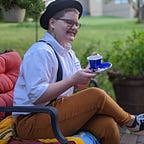Ukiyo-e: One of Japans Most Influential Art Eras
“When I was 50 I had published a universe of designs, but all I have done before the age of 70 is not worth bothering with. At 75, I’ll have learned something of the pattern of nature, of animals, of plants, of trees, birds, fish and insects. When I am 80, you will see real progress. At 90, I shall have cut my way deeply into the mystery of life itself. At 100 I shall be a marvelous artist. At 110, everything I create — a dot, a line — will jump to life as never before.” — Hokusai
Ukiyo-e, or “pictures of the floating world”, refers to a Japanese art style that originated in the Edo, or Tokugawa, period (1603–1868 ). The art spurred from the time of peace and tranquility under the new Shogun rule. Japan in the 1500s was suffering from weak central power and an increase in feudal warfare. This ended the Japanese medieval period as three great daimyos, or lords reunified Japan. The final successor of the three, Tokugawa Shogunate, was the one to complete Japan’s unification and take over the rule of the nation.
“By combining uki for sadness and yo for life, the word ukiyo-e originally reflected the Buddhist concept of life as a transitory illusion, involving a cycle of birth, suffering, death, and rebirth. But ironically, during the early Edo period, another ideograph which meant “to float,” similarly pronounced as uki, came into usage, and the term became associated with wafting on life’s worldly pleasures.” Modern Art Inisght
This art style was mainly inspired by Japan’s pleasure district. The middle class of the time, feeling constrained in how wealth defined their lives, turned to Kabuki theater — a style of classical dance-drama play — as a source of leisure and inspiration. As Ukiyo-e developed, subjects evolved to include popular people and ideas of the higher classes, such as sumo wrestlers, actors, geishas, teahouse mistresses, and literature/folklore. Artists particularly enjoyed painting happy, at-home scenes. Around 1661–72, actresses and courtesans were often singled out for large, grand portraits.
While artworks often had human subjects, the style didn’t reject the traditional Japanese ideas of beauty, poetry, nature, spirituality, sex, and love. Many versions of the ukiyo-e style sported natural landscapes, images of animals and flowers.
“Drawing on earlier developments that had focused on human figures, ukiyo-e painters focused on enjoyable activities in landscape settings, shown close-up, with special attention to contemporary affairs and fashions.” Met Museum
Paintings originated on screens or scrolls before moving to other mediums. Woodblocks, in particular, were inexpensive and efficient to print on. Woodblocks had been used for centuries to sell Buddhist texts and other works to the general public. The Ukiyo-e style was the first art style to fully utilize woodblocks for art. Artists, for the first time in Japan’s history, were now allowed to create art influenced by and accessible to the general public. Since people could afford to buy art prints or commission works on subjects they related too, ukiyo-e’s popularity grew in new magnitudes.
It took at least three people to create one Ukiyo-e style artwork. The first steps of the process belonged to the eshi, or painter. They would use black ink to create the design sketch, based on what was requested from the producer. Afterward, they would create a simple monochrome carving into a woodblock.
The horishi, or sculptor, would then create a more detailed carving. From there, the eshi (since only they know the colors of the request) would fill the carving with color ink. Then the horishi would use the template carving, with the color layout, to create a fully detailed color-carving out of pre-colored wood.
The carving was then given to the shurishi, or printer, who would use the woodblock to print the image onto paper. Using colored inks, they would print each color onto the paper separately until they had a completed painting.
This process was a showcase of complex carving skills, particularly when used to carve a person, and showcased the efficiency of group production.
At the end of the 18th century, two artists, Utagawa Hiroshige and Katsushika Hokusai brought the style back to landscape and seasonal paintings. Their works are often considered the best examples of world printmaking and are the epitome of the Ukiyo-e style. Another famous Ukiyo-e painter was Kitagawa Utamaro, most notably known for his paintings of large-headed women (1790s).
Hiroshige died in 1858, nine years after Hokusai, at a time where Japanese life shifted into the modern era. The last feudal Japanese military government, the Tokugawa shogunate, fell in 1867. Major social, economic, and political upheavals moved Japan into Western modernization, and with it, the Ukiyo-e style was left in the past.
